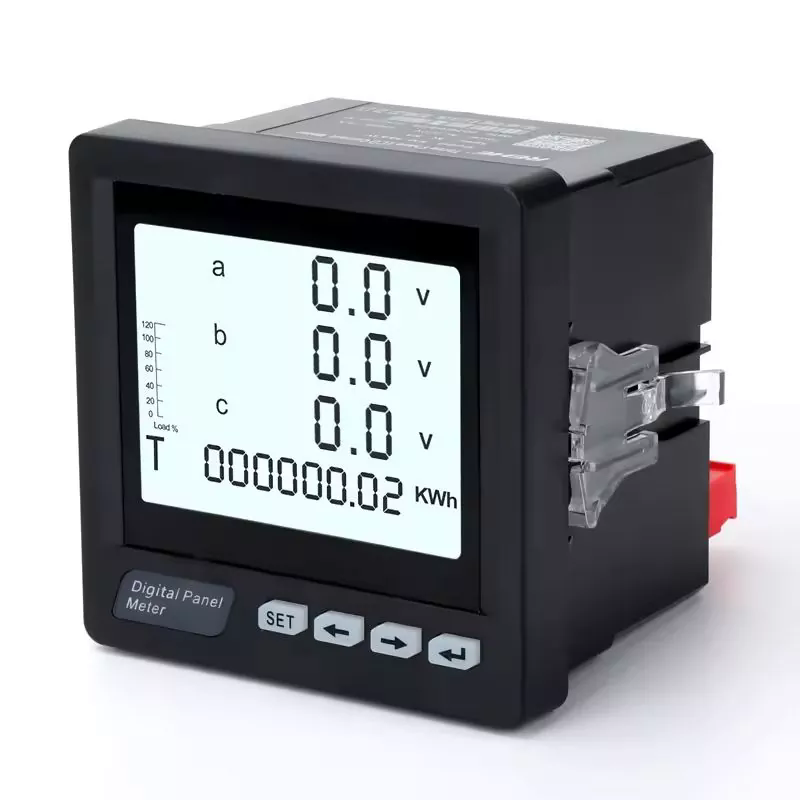Why Are Meter LCD Displays Becoming the Go-To Choice for Modern Measurement Solutions?
2025-02-21
In an era where technology continues to evolve rapidly, digital displays have become an essential component of nearly every device and system. Among these, Meter LCD (Liquid Crystal Display) screens have gained significant popularity in a wide range of applications, particularly for measuring instruments. These displays are now ubiquitous in devices like energy meters, temperature controllers, industrial machinery, and more. But what is it about Meter LCDs that make them the go-to choice for modern measurement solutions, and why are they preferred over other types of displays?
What Is a Meter LCD?
A Meter LCD is a specific type of liquid crystal display that is commonly used in measurement instruments. These displays are designed to show numerical readings or data from a variety of sensors or input devices, often used for monitoring and controlling physical quantities like temperature, pressure, voltage, current, and flow rates. Meter LCDs are typically used in digital meters, which replace traditional analog dials with more precise digital readings.
Meter LCDs can display various units of measurement, making them suitable for a broad array of applications in industries ranging from energy and water utilities to healthcare and automotive. With their clear, concise numerical output, these displays make it easier for users to interpret data accurately and in real-time.
Why Are Meter LCDs So Popular?
1. Clear and Readable Displays
One of the key benefits of Meter LCDs is their ability to deliver clear and easy-to-read information. The high contrast and sharp text on an LCD screen make it simple for users to see measurements, even in challenging lighting conditions. Unlike older analog meters, which can be difficult to read or prone to human error, Meter LCDs provide a precise digital output that enhances readability and ensures that measurements are easy to interpret.
This clarity makes Meter LCDs especially beneficial for environments where quick, accurate readings are essential—such as in industrial settings, laboratories, or energy management systems.
2. Compact and Space-Efficient
Another major advantage of Meter LCDs is their compact size. Unlike bulky mechanical dials or analog meters, Meter LCDs are thin, lightweight, and easy to integrate into a wide range of devices. This makes them ideal for applications where space is limited, such as in portable measurement devices or handheld instruments.
The slim profile of Meter LCDs also allows for more flexible designs in terms of form factor. Engineers can incorporate these displays into smaller, sleeker devices, which are not only more aesthetically appealing but also more functional for users on the go.
3. Low Power Consumption
Meter LCDs are known for their low power consumption, which makes them highly efficient for battery-powered devices or equipment that requires long operational hours without frequent recharging. Since LCDs do not emit their own light (they rely on external backlighting), they consume significantly less power compared to other types of digital displays, such as LED or OLED screens.
This energy efficiency is particularly important in industries like renewable energy, where devices like smart energy meters or solar power systems need to operate for extended periods without drawing too much power from the system.
4. Durability and Longevity
Meter LCDs are highly durable, with a long lifespan. Their solid-state construction (as opposed to mechanical meters with moving parts) makes them resistant to wear and tear over time. In environments where equipment is subjected to frequent use or harsh conditions, Meter LCDs are a preferred choice due to their resilience.
The robust nature of Meter LCDs makes them ideal for use in industries like manufacturing, transportation, and utilities, where devices often need to withstand vibrations, temperature fluctuations, or exposure to moisture.
5. Versatility and Customization
Meter LCDs offer great versatility in terms of design and functionality. Manufacturers can customize the display to show a wide range of information, from simple numeric values to more complex data sets, depending on the needs of the application. Some Meter LCDs are capable of displaying multiple units of measurement, while others may include additional features such as bar graphs, icons, or even color coding to provide more detailed information at a glance.
In addition, Meter LCDs can be adapted to a variety of measurement devices, including digital voltmeters, water flow meters, temperature sensors, and medical instruments, making them an essential component across many industries.
6. Easy to Interface with Other Systems
Meter LCDs can easily integrate with microcontrollers and other digital systems, making them a great choice for modern electronic devices. They can be used in combination with sensors, controllers, and other components to form a complete measurement system. This capability is particularly useful for creating devices that require real-time data monitoring and feedback, such as in smart home systems, industrial automation, and diagnostic equipment.
The ability to interface seamlessly with other systems allows Meter LCDs to be incorporated into advanced technologies that rely on accurate measurements for optimal performance.
Applications of Meter LCDs
Meter LCDs are used in a wide variety of applications, making them integral to many industries. Some common uses include:
Energy Meters: LCD displays are used in smart energy meters to show real-time consumption data, such as electricity usage, in kilowatt-hours (kWh).
Medical Equipment: Devices like blood pressure monitors, thermometers, and glucose meters use Meter LCDs to display measurements clearly and accurately.
Industrial Control Systems: Equipment such as temperature controllers, pressure gauges, and flow meters in manufacturing and industrial processes rely on LCD displays for accurate data presentation.
Water Management: Water meters, including those used for household or industrial applications, use LCDs to display water consumption in liters or gallons.
Automotive Applications: Meter LCDs can be found in car dashboards and vehicle diagnostic systems, providing real-time information on fuel levels, tire pressure, and engine status.
Conclusion
Meter LCDs have become an indispensable tool in modern measurement and monitoring solutions. Their clarity, energy efficiency, durability, and ease of integration with other systems make them the ideal choice for a wide range of applications, from household appliances to high-tech industrial devices. As technology continues to advance and the demand for accurate, real-time measurements grows, Meter LCD displays are likely to play an even more significant role in the future of measurement instruments.
So, why are Meter LCDs becoming the go-to choice in modern measurement solutions? It's clear that their versatility, readability, and reliability make them an essential part of everyday technology—helping to provide precise, clear, and efficient measurements in almost every sector.



